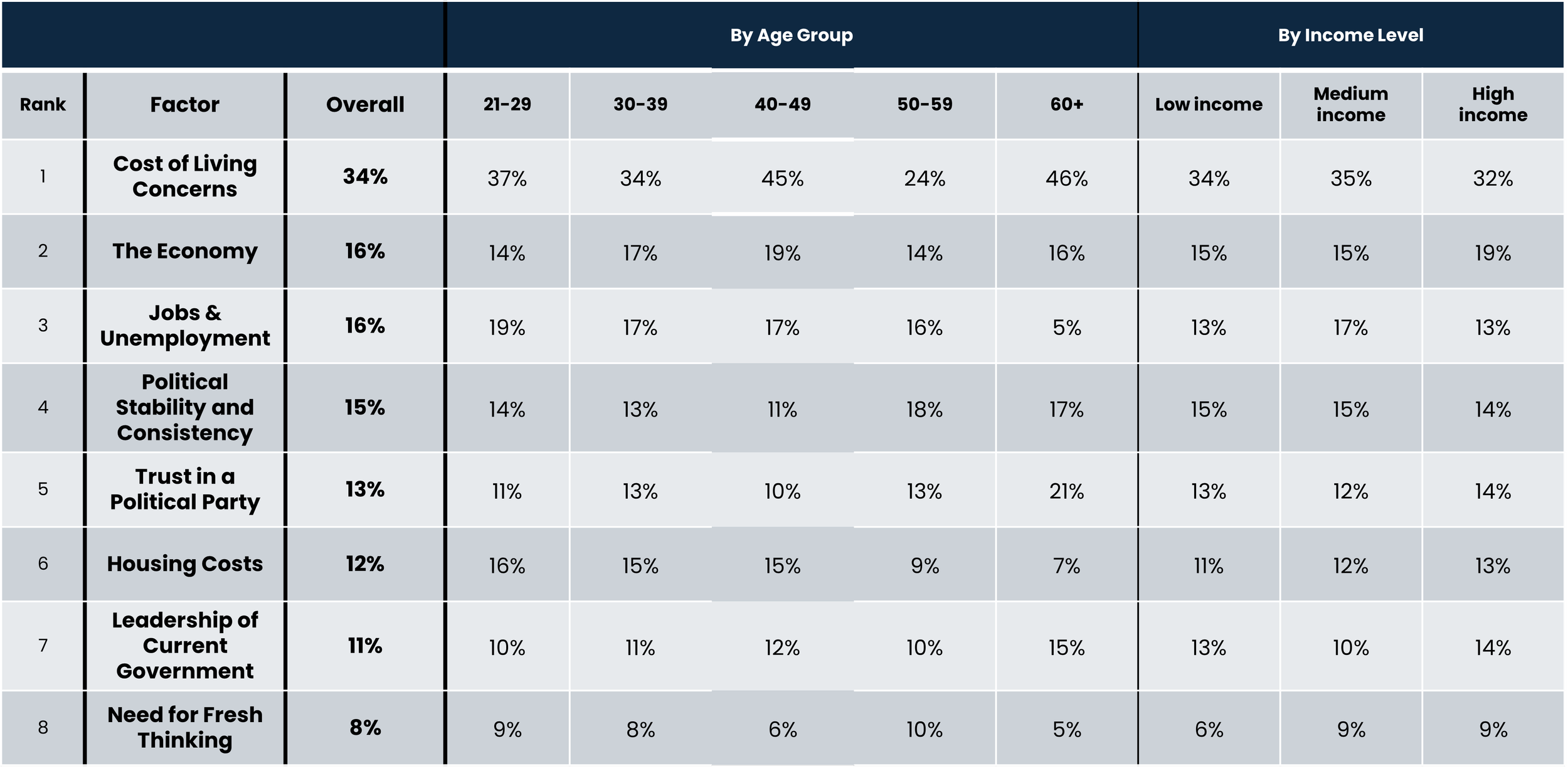This news article reports on a recent police warning about investment scams in Singapore that use politicians’ likenesses to appear legitimate, particularly concerning as Singapore approaches its May 3rd general election.
Key points from the article:
- Scammers are creating fake investment opportunities (including cryptocurrency schemes) that falsely appear to be endorsed by Singaporean political figures like Prime Minister Lawrence Wong
- These scams use social media ads and posts to direct victims to phishing websites
- Victims are asked for personal information, including contact details and credit card information
- Scammers pose as investment company employees or brokers to guide victims through fraudulent transactions
- Prime Minister Lawrence Wong previously warned about deepfakes using his likeness for scams
- The Leader of the Opposition, Pritam Singh, has also had his image misused in similar scams
- The police have provided a ScamShield helpline for those concerned about such scams
This type of scam is becoming increasingly common worldwide, with fraudsters exploiting public trust in political figures to lend credibility to their schemes. The timing around Singapore’s election likely makes these scams even more prominent.
Analysis of Fake Political Endorsement Ad Scams
Types of Fake Political Ad Scams
- Celebrity/Political Endorsement Scams
- False advertisements showing politicians or celebrities endorsing investment products
- Deepfake videos and manipulated images showing trusted figures promoting schemes
- Fake news articles with fabricated quotes from political leaders
- Platform Impersonation
- Fraudulent websites mimicking official government portals
- Fake social media accounts impersonating politicians or government agencies
- Counterfeit apps claiming government affiliation
- Election-Period Targeted Scams
- Heightened activity during election seasons when political attention is high
- Special “election investment opportunities” claiming government backing
- Fake political campaign fundraising schemes
- Cross-Border Political Scams
- Leveraging foreign politicians’ images to target international audiences
- Exploiting language barriers and limited verification abilities
- Using geopolitical events to create urgency for investment
Technological Enablers
- Deepfake Technology: Increasingly sophisticated audio and video manipulation tools
- AI-Generated Content: Realistic text and images produced at scale
- Targeted Advertising: Sophisticated demographic targeting on social platforms
- Digital Payment Systems: Crypto and digital wallets enabling harder-to-trace transactions
Political Implications
For Political Figures
- Reputation Damage: Association with scams can harm public trust and credibility
- Resource Diversion: Time and resources spent combating false endorsements
- Voter Confusion: Blurring of authentic and inauthentic political communications
- Legal Complications: Potential liability questions and legal challenges
For Democratic Processes
- Information Ecosystem Pollution: Increasing difficulty distinguishing legitimate from fraudulent political content
- Voter Trust Erosion: Growing skepticism toward all political communications
- Election Interference: Potential to influence election outcomes through targeted misinformation
- Policy Impact: Hampering implementation of legitimate government programs due to public wariness
For Governance
- Regulatory Challenges: Difficulty crafting effective regulation across jurisdictions
- Enforcement Gaps: Limited resources to address sophisticated cross-border scams
- Public Education Burden: Increasing need for digital literacy programs
- International Relations: Tensions when scams originate from foreign actors
Economic Implications
- Direct Financial Losses: Immediate victim financial losses
- Market Distortion: Legitimate investment opportunities facing heightened scepticism
- Increased Transaction Costs: Additional verification steps are required for legitimate entities
- Regulatory Compliance Burden: Higher costs for legitimate businesses to distinguish themselves
Societal Impact
- Diminishing Trust: General erosion of public trust in both government and media
- Digital Divide Effects: Disproportionate impact on less tech-savvy populations
- Social Cohesion: Potentially amplifying political polarization and distrust
- Information Fatigue: Public exhaustion from constant verification requirements
Mitigation Strategies
- Cross-Sector Collaboration: Government-Platform-Media Partnerships
- Public Education Campaigns: Digital literacy and scam awareness initiatives
- Technology Solutions: Better verification systems and watermarking for authentic content
- Legal Framework Evolution: Updated laws addressing digital impersonation
- International Coordination: Cross-border enforcement mechanisms
This pattern of scams represents a significant and evolving challenge at the intersection of technology, politics, and public trust, with implications extending far beyond the immediate financial losses to victims.
Implications of Political Fake Ad Scams for the Fake News Ecosystem
Direct Relationship to Fake News
- Blurred Boundaries
- Political scam ads contribute to an environment where distinguishing between legitimate news and fabrication becomes increasingly challenging.
- Creates a “boy who cried wolf” effect, where genuine political statements are met with skepticism
- Mutual Reinforcement Cycle
- Fake news articles legitimise scam ads by providing “evidence” of endorsements.
- Scam ads frequently link to fake news sites, increasing their visibility and perceived credibility.
- Each phenomenon strengthens and validates the other
- Shared Infrastructure
- Often utilise the same distribution networks and technological tools
- It may be created by the same bad actors or criminal organisations
- Similar targeting mechanisms to reach vulnerable populations

Impact on Information Ecosystems
- Eroding Media Literacy
- Each successful scam weakens the public’s ability to evaluate the credibility of information.
- Contributes to general cynicism about all media sources
- Reduces the effectiveness of legitimate fact-checking efforts
- Platform Challenges
- Forces content moderation systems to distinguish between political speech, scams, and misinformation
- Creates impossible trade-offs between free expression and fraud prevention
- Places platforms in a politically contentious position of arbitrating truth
- Information Source Hierarchy Collapse
- Diminishes the authority of traditional gatekeepers and expert sources
- Elevates emotional appeal and confirmation bias over factual accuracy
- Creates parallel information realities for different segments of society
Political Governance Impacts
- Policy Implementation Barriers
- Legitimate government programs face increased scepticism due to their association with scams.
- Public health initiatives, economic policies, and security directives all undermined
- May necessitate redundant verification mechanisms, reducing efficiency
- Democratic Discourse Degradation
- Genuine political debate is increasingly complex in a low-trust environment.
- Complex policy issues are often reduced to simplistic narratives that resist nuance.
- Increasing polarization as communities consume different information sources
- Regulatory Complications
- Attempts to regulate fake news may inadvertently capture legitimate speech
- Creates vulnerability to authoritarian exploitation under the guise of “fake news” prevention
- International coordination stymied by differing free speech standards
Long-term Social Consequences
- Institutional Trust Erosion
- Each scam further undermines faith in government, media, and corporate institutions.
- Recovery of lost institutional trust is complicated and slow
- May lead to democratic participation
- Social Cohesion Threats
- Different information realities make it increasingly challenging to achieve shared social consensus.
- Enables exploitation of social divisions by domestic and foreign actors
- May contribute to civil unrest when foundational facts cannot be agreed upon
- “Post-Truth” Acceleration
- Contributes to the environment where emotional resonance trumps factual accuracy
- The public increasingly selects information sources based on identity rather than reliability.
- Truth determination is increasingly seen as a subjective rather than an objective process.
Counter-Measure Evolution
- Multi-Stakeholder Approaches
- Need for a coordinated response across the government, technology companies, media, and civil society.
- Public-private partnerships for detection and rapid response
- Educational initiatives targeting both older and younger vulnerable populations
- Technical Solutions
- Content provenance standards and digital watermarking
- AI-powered detection systems with human oversight
- Blockchain-based verification systems for official communications
- Societal Resilience Building
- Media literacy education integrated into core curricula
- Community-based verification networks and trusted information hubs
- Restoration of common factual ground through cross-partisan initiatives
The intertwining of political scam ads with the broader fake news ecosystem poses a significant challenge to democratic societies, necessitating sophisticated, multi-layered responses that strike a balance between free expression and information integrity.
Analysis of Fake Advertisement Instances Involving MPs
Based on the original news article and broader context about political scams, here’s an analysis of instances involving fake advertisements misrepresenting Members of Parliament (MPs):
Confirmed Cases from the Article
- Prime Minister Lawrence Wong
- Target of deepfake technology and false endorsements
- Specifically mentioned as having warned the public in March about scams using his likeness
- Fake ads claimed he endorsed investment opportunities
- Some scams also falsely suggested he endorsed permanent residence application services
- Pritam Singh (Leader of the Opposition)
- The article explicitly mentions his image being misused in similar scams
- As Workers’ Party chief, his political prominence makes him a valuable target for scammers
Common Patterns in MP Impersonation Schemes
- Targeting Based on Political Prominence
- Higher-profile MPs and cabinet ministers are more frequently impersonated
- Opposition leaders also targeted to appeal to different demographic segments
- Timing often coincides with periods of high public visibility (elections, major policy announcements)
- Cross-Platform Approach
- Fake endorsements typically spread across multiple social media platforms
- Often paired with counterfeit news articles to enhance credibility
- Sophisticated operations may include fake websites mimicking government domains
- Evolving Technological Sophistication
- Progression from simple image manipulation to convincing deepfake videos
- AI-generated content is creating more persuasive fake endorsements
- Voice cloning technology enables fraudulent audio messages
- International Dimensions
- Singapore MPS are targeted not only at domestic scams but also at cross-border schemes.
- An international audience may have less ability to verify authenticity
- Regulatory jurisdiction challenges when scams originate overseas
Impact on Political Landscape
- Trust Disruption
- Each fake endorsement undermines public confidence in authentic communications
- Creates environment where official statements require additional verification
- May contribute to general political cynicism
- Electoral Consequences
- Timing around Singapore’s May 3rd election is potentially designed to maximise impact.
- May influence voter perceptions about candidates’ judgment or associations
- Could potentially affect close electoral races
Countermeasures
- Official Response Channels
- Development of rapid response protocols for false endorsement claims
- Verified communication channels for official disclaimers
- Public education initiatives about verifying political communications
- Technology Solutions
- Digital signatures for official communications
- Verification features on government and official party websites
- Partnership with social media platforms for expedited takedown procedures

The increasing sophistication of these impersonation schemes represents a growing challenge for democratic systems worldwide, with Singapore’s experience highlighting the global nature of this threat to political integrity and public trust.
The Cyber Security Agency of Singapore (CSA) has issued an advisory warning Singaporeans about potential cyber threats as the May 3 Polling Day approaches. They highlight several specific concerns:
- Fraudsters may create fake social media accounts and political party websites or send phishing emails to solicit fraudulent donations.
- AI is being used to create highly personalised phishing attempts, including convincing emails, messages, and voice clones. Scammers might analyse people’s backgrounds to develop targeted scam tactics aligned with their political views.
- There’s the risk of malware distribution through fake campaign apps and malicious links in emails or SMS messages.
- Deepfakes may be used to falsely show candidates saying or doing things they never did, damaging their reputation.
CSA recommends several protective measures:

- Carefully examine any links in messages and cross-reference with official websites.
- Avoid clicking on links in unsolicited communications
- Rely on verified news outlets and official government websites for election information
- Report suspected phishing or scams through the ScamShield app
- Download apps only from official sources
- Look for visual anomalies and unnatural audio when identifying potential deepfakes.
- Avoid sharing unverified information.
The article notes that Singapore’s general election will be held on May 3, 2025, and this is the first time a new law banning fake online ads will be in place for a general election.
Understanding Election-Related Cyber Threats and Prevention
Let me explain the cyber threats mentioned in the article in greater depth, along with comprehensive prevention strategies.
Detailed Analysis of Cyber Threats
1. Impersonation and Fake Websites
Threat: Fraudsters create counterfeit social media accounts and websites that mimic legitimate political parties or candidates, often to steal sensitive information or manipulate public opinion. These fake platforms can:
- Solicit fraudulent donations
- Spread misinformation designed to manipulate voter behaviour
- Harvest personal information and credentials
- Damage a candidate’s reputation through false statements
How it works: Attackers create highly convincing replicas of official websites with nearly identical URLS (e.g., “singapore-elections.com” instead of “elections.gov.sg”) and visual elements. They may also create social media accounts that appear official but contain subtle differences in usernames.
2. AI-Enhanced Phishing
Threat: Artificial intelligence is revolutionising phishing attacks by enabling:
- Highly personalised messages based on your digital footprint
- Natural-sounding voice clones that can impersonate candidates or officials
- Targeted messaging aligned with your political views or interests
How it works: AI analyses your online presence (social media posts, comments, likes) to craft messages that resonate with your specific interests or concerns. For example, if you’ve shown interest in environmental policies, you might receive a fraudulent message about a candidate’s “new green initiative” requiring “urgent donations.”
3. Deepfakes
Threat: Sophisticated AI-generated videos or audio recordings that show candidates saying or doing things they never actually did.
How it works: Using machine learning algorithms, fraudsters can superimpose a candidate’s face onto another person’s body or manipulate existing footage to change what was said. These can spread rapidly on social media and damage a candidate’s reputation before they can be debunked.
4. Malware Distribution
Threat: Malicious software disguised as election-related apps or content that:
- Steals personal data
- Monitors device activity
- Encrypts files for ransom
- Gives attackers remote access to your device
How it works: Attackers create fake campaign apps, voter information tools, or polling location finders that contain hidden malware. These might be distributed through app stores, email attachments, or download links in messages.
5. Data Manipulation
Threat: Though not explicitly mentioned in the article, another concern is the manipulation of voter data or election-related information.
How it works: Attackers might target election databases or official information channels to alter information about polling stations, voting procedures, or candidate details to create confusion or suppress voting.

Comprehensive Prevention Strategies
Digital Literacy and Awareness
- Verify sources: Check official government websites (ending in .gov.sg) for election information.
- Cross-reference news: Confirm information across multiple reliable sources
- Check URLS carefully: Look for subtle misspellings or domain differences
- Question emotional appeals: Be sceptical of messages designed to provoke strong reactions

Technical Protection
- Use official apps: Download election-related applications only from official government sources or verified app stores.
- Enable multi-factor authentication: Protect your accounts with additional verification methods.
- Install security software: Use a reputable antivirus and anti-malware program.
- Keep software updated: Apply security patches promptly to fix vulnerabilities.
- Use a password manager: Create strong, unique passwords for all accounts.
Content Verification
- Examine media critically: Look for visual anomalies in videos (blurring, strange lighting, unnatural movements)
- Check audio-visual sync: In videos, watch for mismatches between lip movements and speech.
- Verify timestamps: Check when content was actually created versus when it claims to be from
- Reverse image search: Use tools like Google Images to verify photographs.
Safe Communication Practices
- Avoid clicking links: Type URLS directly into your browser rather than clicking links in messages.
- Be cautious with attachments: Don’t open files from unknown sources
- Verify requests: Contact organisations directly through official channels if you receive unusual requests
- Use secure messaging: Consider end-to-end encrypted messaging apps for sensitive communications
Reporting and Response
- Report suspicious content: Use the ScamShield app to report potential scams or phishing attempts.
- Notify authorities: Report election-related misinformation to the Elections Department.
- Alert platforms: Report fake accounts or misleading content to social media companies
- Inform others: Share verified information about identified threats with friends and family.
Election-Specific Precautions
- Verify candidate information through official channels.
- Donation vigilance: Only donate through official campaign websites after verifying their authenticity
- Polling information: Confirm voting locations and procedures through official government sources
- Scrutinise polls: Be sceptical of unofficial polls or survey results, especially those shared via social media.
By implementing these strategies, Singaporeans can significantly reduce their vulnerability to cyber threats during the election season while continuing to fully participate in the democratic process.

Anti-Scam Resources in Singapore
Singapore has developed a robust ecosystem of anti-scam resources to combat the rising threat of scams. Here’s a comprehensive overview of the help available:
Government Agencies and Helplines

ScamShield
- What it is: A mobile app developed by the National Crime Prevention Council (NCPC) and the Government Technology Agency (GovTech)
- Features:
- Blocks suspected scam calls and messages
- Allows reporting of scam attempts
- Available for both ios and Android
- How it works: The app filters calls from phone numbers associated with previously reported scam cases and blocks suspicious SMS messages.

Anti-Scam Centre (ASC)
- What it is: A specialised unit set up by the Singapore Police Force
- Services:
- Disrupts scammers’ operations
- Works with banks to freeze suspicious accounts
- Helps recover stolen funds when possible
- Hotline: 1800-255-0000
NCPC Scam Alert Website (scamalert.sg)
- Features:
- Latest information on scam trends
- Educational resources
- Reporting mechanism for scams
Report Scams Portal
- URL: www.scamalert.sg/report
- Purpose: Centralised platform to report various types of scams
Banking Protection Measures
Anti-Scam Initiatives by Banks
- Pre-transaction screening
- Cooling-off periods for large or unusual transactions
- SMS alerts for transactions
- Transaction limits on mobile banking
Bank-Specific Hotlines
Most major banks have dedicated anti-scam hotlines:
- DBS: 1800-339-6963
- OCBC: 1800-363-3333
- UOB: 1800-222-2121
- Standard Chartered: 1800-747-7000
Community Support
Scam Support Centre
- What it is: Support centre for scam victims
- Services:
- Emotional support
- Practical advice
- Guidance on recovery steps
NCPC Jaga (Watch) Your Data
- A community initiative encouraging vigilance regarding personal data
Educational Resources
Spot the Signs Campaign
- Public education campaign teaching citizens to identify common scam patterns.
Inter-Ministry Committee on Scams
- Coordinates anti-scam efforts across government agencies
- Produced educational materials and campaigns

What to Do If You’ve Been Scammed
- Report immediately to the Police at 999 for urgent cases or 1800-255-0000
- Contact your bank to freeze accounts or stop transactions
- Preserve evidence like messages, emails, and transaction details
- Report online scams at www.scamalert.sg/report
- Change passwords for compromised accounts
- Monitor accounts for suspicious activity
- Seek support from the Scam Support Centre if needed
Prevention Best Practices
- Use ScamShield app
- Verify information through official channels
- Never share OTPS, passwords, or personal details
- Be sceptical of unexpected messages about prizes or urgent requests
- Check bank statements regularly
- Keep software updated on all devices
- Use strong, unique passwords and enable two-factor authentication
Singapore’s multifaceted approach effectively combats scams by combining technology, education, enforcement, and community support. The integration of these resources provides Singaporeans with comprehensive protection against increasingly sophisticated scam attempts.
Maxthon
Maxthon has embarked on an ambitious journey aimed at significantly enhancing the security of web applications, driven by a resolute commitment to safeguarding users and their confidential data. At the heart of this initiative lies a collection of sophisticated encryption protocols, which act as a robust barrier for the information exchanged between individuals and various online services. Every interaction—whether it involves sharing passwords or personal information—is protected within these encrypted channels, effectively preventing unauthorised access attempts from intruders.
This meticulous emphasis on encryption marks merely the initial phase of Maxthon’s extensive security framework. Acknowledging that cyber threats are constantly evolving, Maxthon adopts a forward-thinking approach to user protection. The browser is engineered to adapt to emerging challenges, incorporating regular updates that promptly address any vulnerabilities that may surface. Users are strongly encouraged to activate automatic updates as part of their cybersecurity regimen, ensuring they can seamlessly take advantage of the latest fixes without any hassle.
In today’s rapidly changing digital environment, Maxthon’s unwavering commitment to ongoing security enhancement signifies not only its responsibility toward users but also its firm dedication to nurturing trust in online engagements. With each new update rolled out, users can navigate the web with peace of mind, assured that their information is continuously safeguarded against ever-emerging threats lurking in cyberspace.
